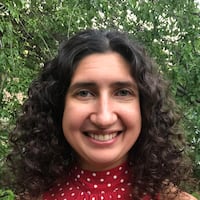The chairman of the Gwinnett County legislative delegation on Monday plans to introduce the county commission’s redistricting proposal, which maintains the board’s current size of five members.
“It seems like a very fair proposal that clearly took into consideration public input from their town halls,” said state Rep. Sam Park, D-Lawrenceville.
The commission recently approved the four-district map with a unanimous vote. The commission chairperson is elected at large.
“The map adopted by the Gwinnett County Board of Commissioners is more compact and does an exemplary job of capturing the most diverse county in the state by having each district closely represent the county as a whole,” District 1 Commissioner Kirkland Carden, the board’s vice chair, said in a statement.
By law, lines must be redrawn every decade based on United States Census results, ensuring each district is roughly equal in population. Gwinnett has grown in the past decade by 150,000 residents.
The delegation will hold at least two public hearings on the proposed map, Park said. A majority of the delegation, and then the Legislature, must approve any redistricting proposal before it is sent to the governor’s desk.
Redistricting in Gwinnett became controversial in November when state Sen. Clint Dixon, a Buford Republican, introduced special session bills that would have expanded the commission size, weakened the chairperson and made the school board nonpartisan. After an outcry, he backed off the legislation, but a bipartisan group of Gwinnett lawmakers has expressed support for adding two more districts to the county commission.
Legislators will ask questions about the maps and solicit public comment during this month’s hearings, Park said.
“I’m certainly open to additional changes and the compromise necessary to pass these maps,” he said.
Commissioners and county staff worked with the Legislative and Congressional Reapportionment Office to ensure compliance with the United States and Georgia constitutions and the Voting Rights Act of 1965. The result, according to county lobbyist Joel Wiggins, is a proposed map that does not split up cities or voting precincts, reduces split school zones and keeps older neighborhoods intact. Wiggins said the proposed map is an improvement from the current one.
Each of the four districts deviated by a maximum of 1.75% from the ideal of about 239,000 residents, according to county documents.
District 4, which includes Lawrenceville, Buford and other parts of northern and central Gwinnett, would be nearly 3,400 residents over the target. It would gain the county’s northeastern corner, including Braselton, from District 3.
District 3, which includes Snellville, Grayson, Dacula and other parts of southern and eastern Gwinnett, would contain almost 4,200 residents less than the target. It would gain some land east of Lilburn from District 2.
The Gwinnett delegation will meet Jan. 13 at 7 p.m. to consider proposed commission and school board maps and hear public comment. The meeting will take place in the auditorium of the Gwinnett Justice and Administration Center, 75 Langley Drive in Lawrenceville. It will also be live streamed.
About the Author
Keep Reading
The Latest
Featured


